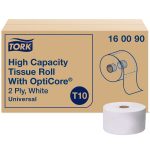 Without regular cleaning, dust can quickly make its way into every nook and cranny in your work space. These inorganic and organic particles are mostly made of dead skin cells, but they can also contain pesticides, lead and other toxic substances. When movement or airflow disturb the dust, these dangerous pollutants can be inhaled, which is particularly harmful for people with asthma or allergies.
Without regular cleaning, dust can quickly make its way into every nook and cranny in your work space. These inorganic and organic particles are mostly made of dead skin cells, but they can also contain pesticides, lead and other toxic substances. When movement or airflow disturb the dust, these dangerous pollutants can be inhaled, which is particularly harmful for people with asthma or allergies.
The Three Risks of Dust
There are three major risks that result from having dust buildup, including:
1. Allergies
Many people suffer from dust mite allergies, and they can be triggered when too much dust is in the air. If you are allergic to dust, you may experience a runny or stuff nose, sneezing and itchy or watery eyes.
2. Asthma
Asthma attacks can be triggered by the by-products of bacteria commonly found in dust. If you have asthma, take care when cleaning and wear a mask. When dusting or vacuuming, dust flies into the air and can cause an attack.
3. Dermatitis
Breathing in dust can also have an affect on your skin. If you have atopic dermatitis or eczema, inhaling dust can trigger a flare up.
Maintaining a totally dust-free office isn’t realistic, but there are many ways you can decrease the amount of it in your work space. Follow these tips to reduce the amount of dust:
1. Get rid of carpets.
Choose hard-surface flooring whenever possible because dust clings easily to carpets. The fiber in carpets can even produce more dust!
2. Dust regularly.
Instead of using feather dusters that just move dust around, use tools and cleaning products that actually pick up and trap dust. Microfiber cloths are a great option!
3. Use air purifiers.
Investing in a high-quality air purifier is a great way to decrease the number of airborne particles in your work space. This in turn reduces the amount of dust that builds up.
Ready to start dust busting in your office? Stock up on your favorite cleaning supplies by shopping our online catalog.




